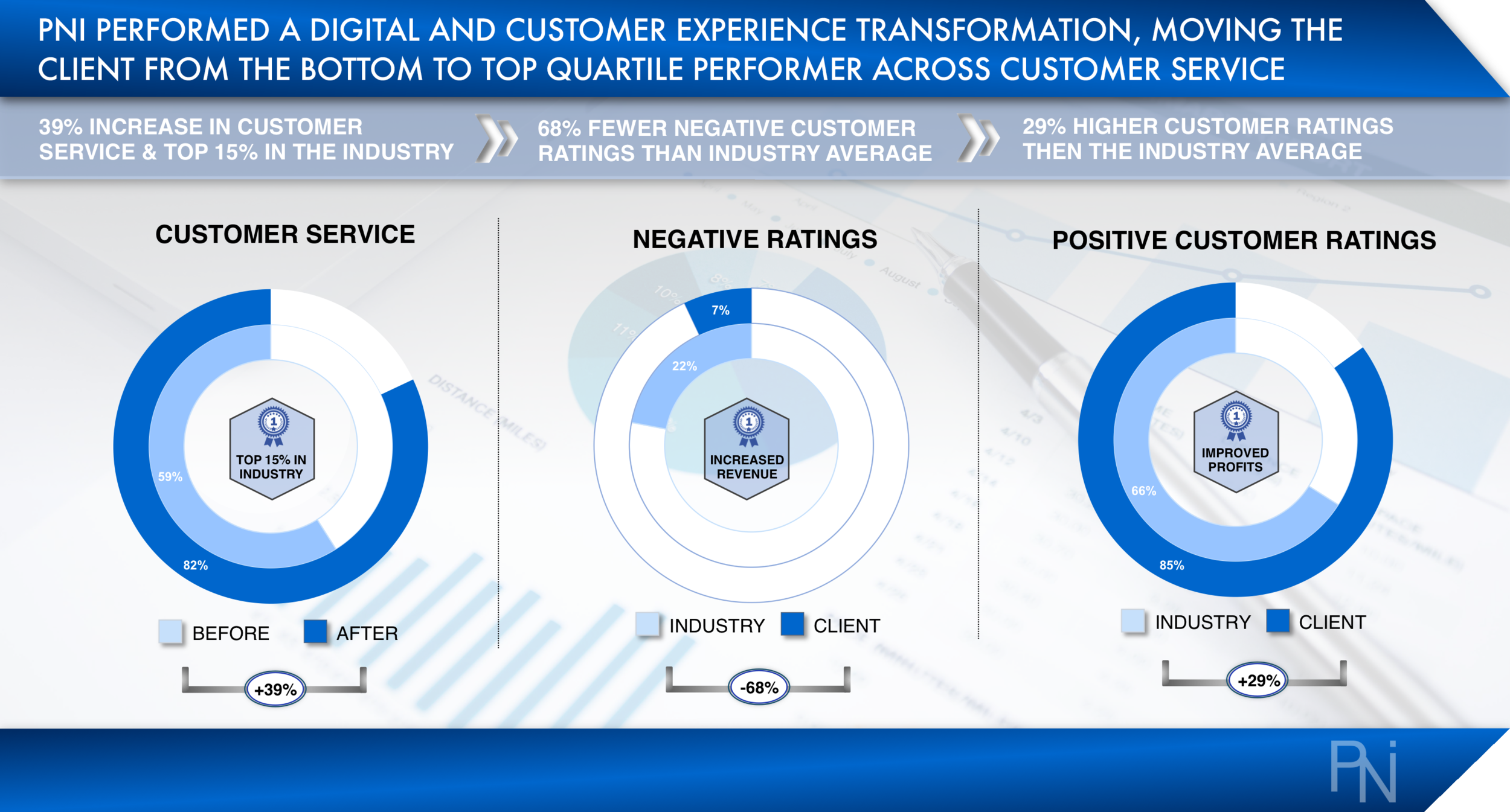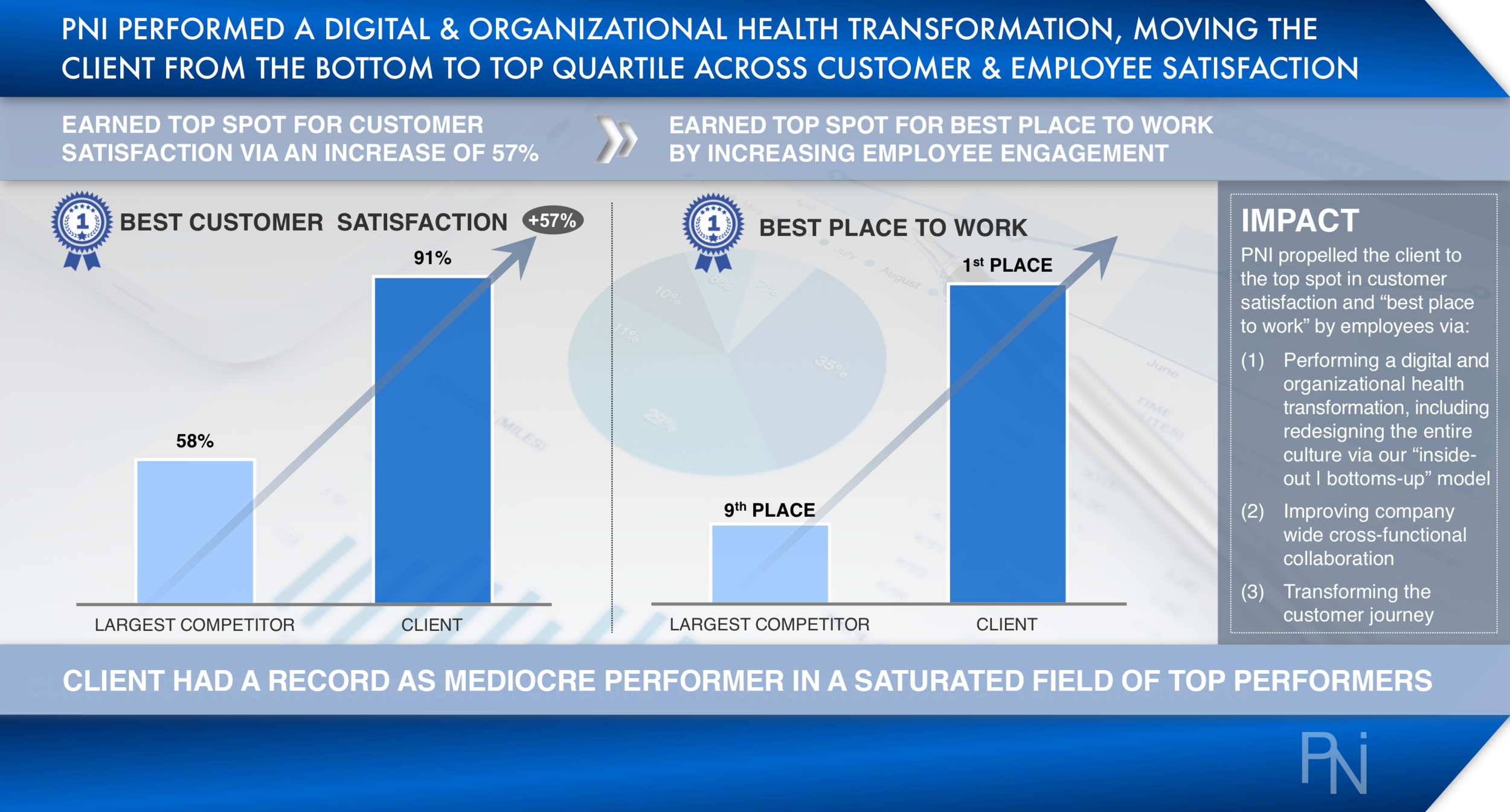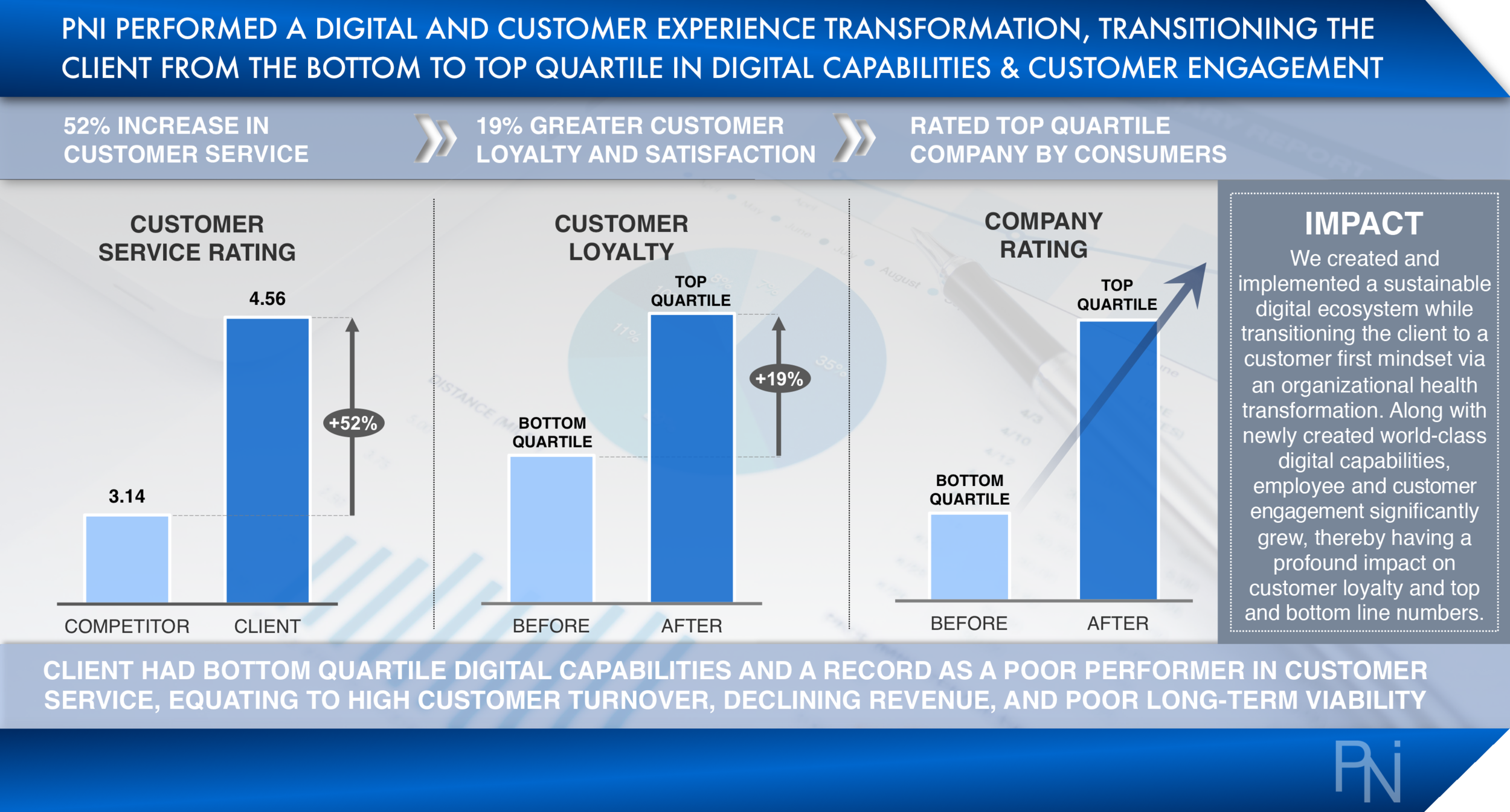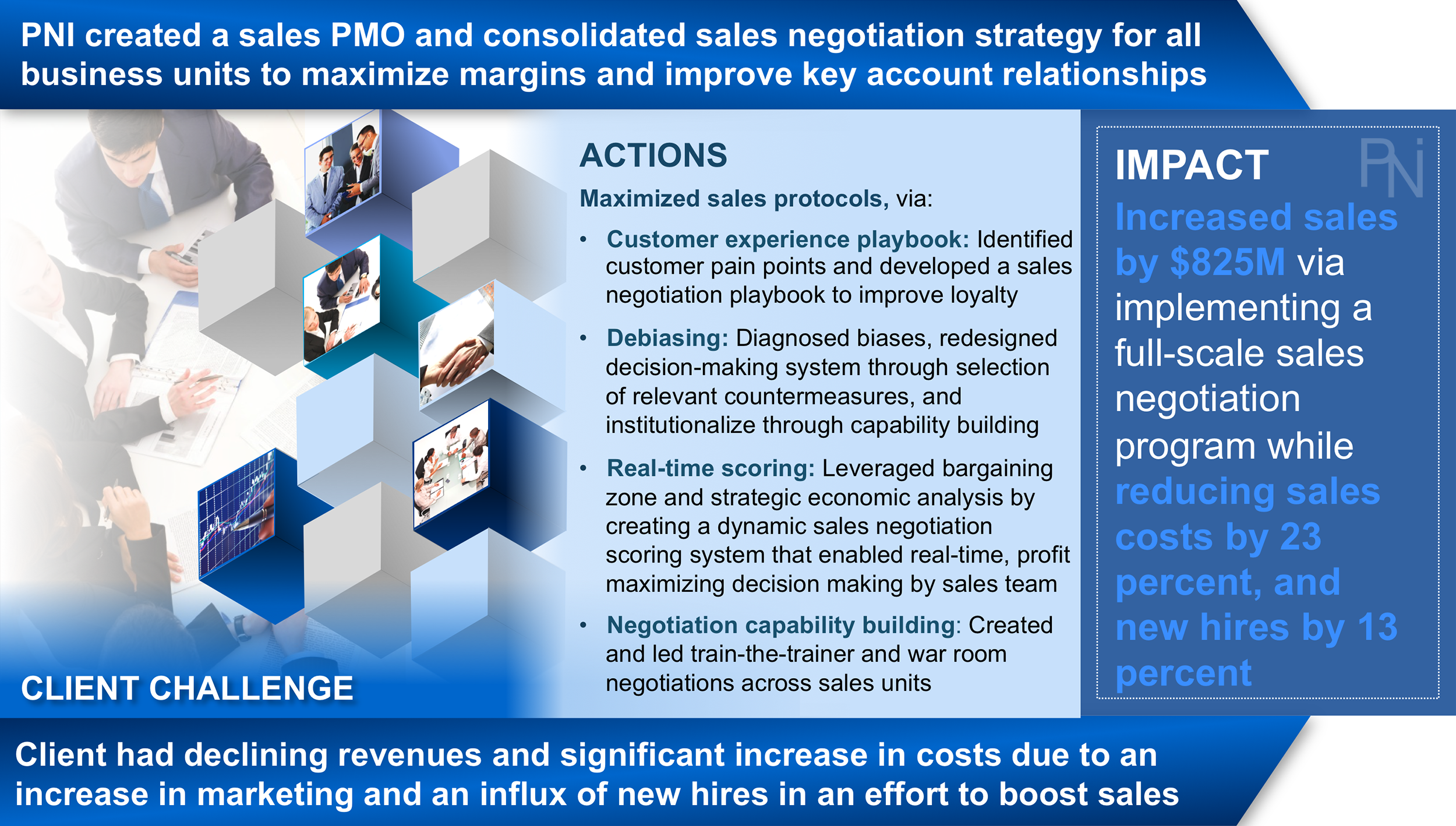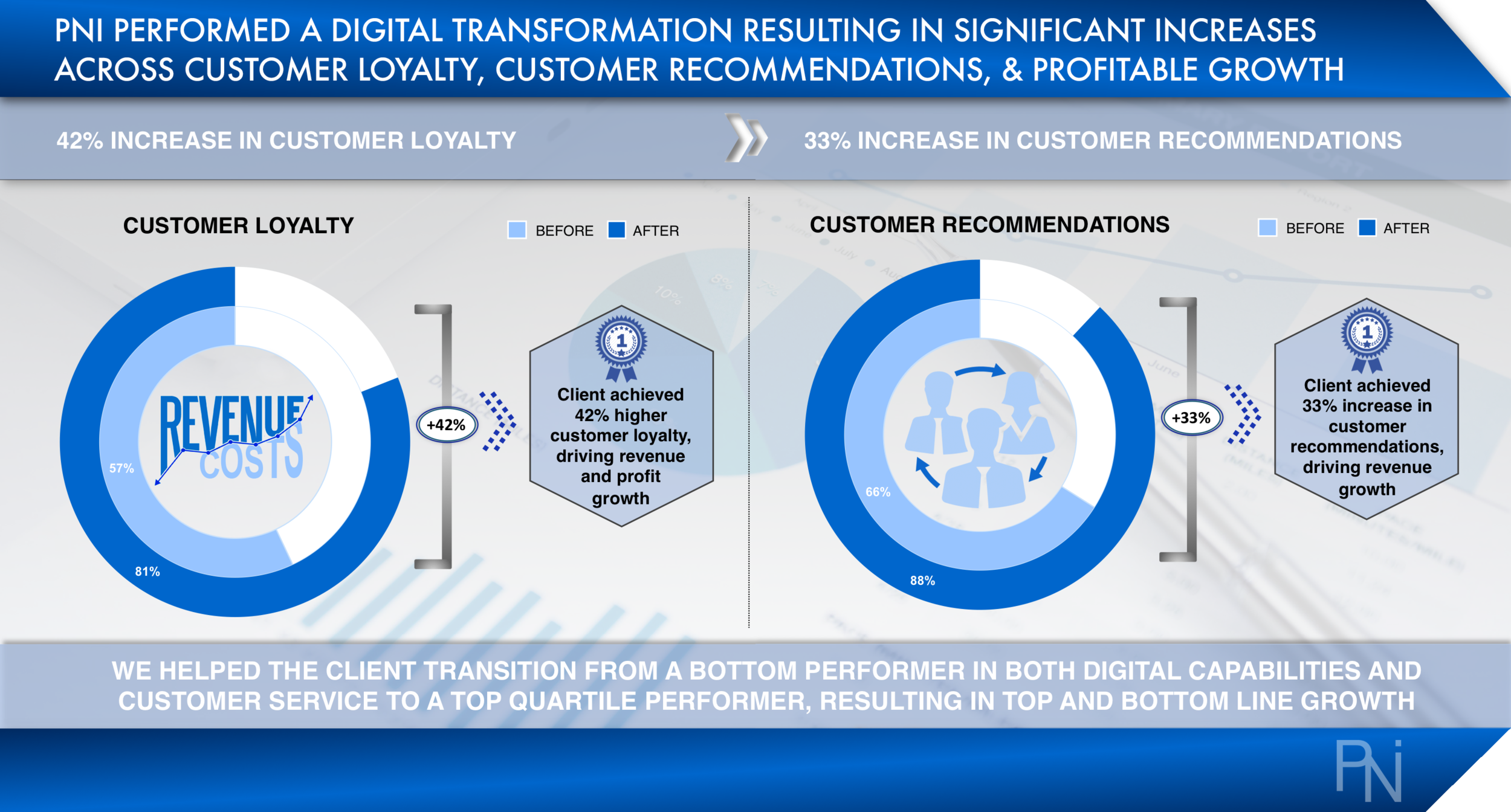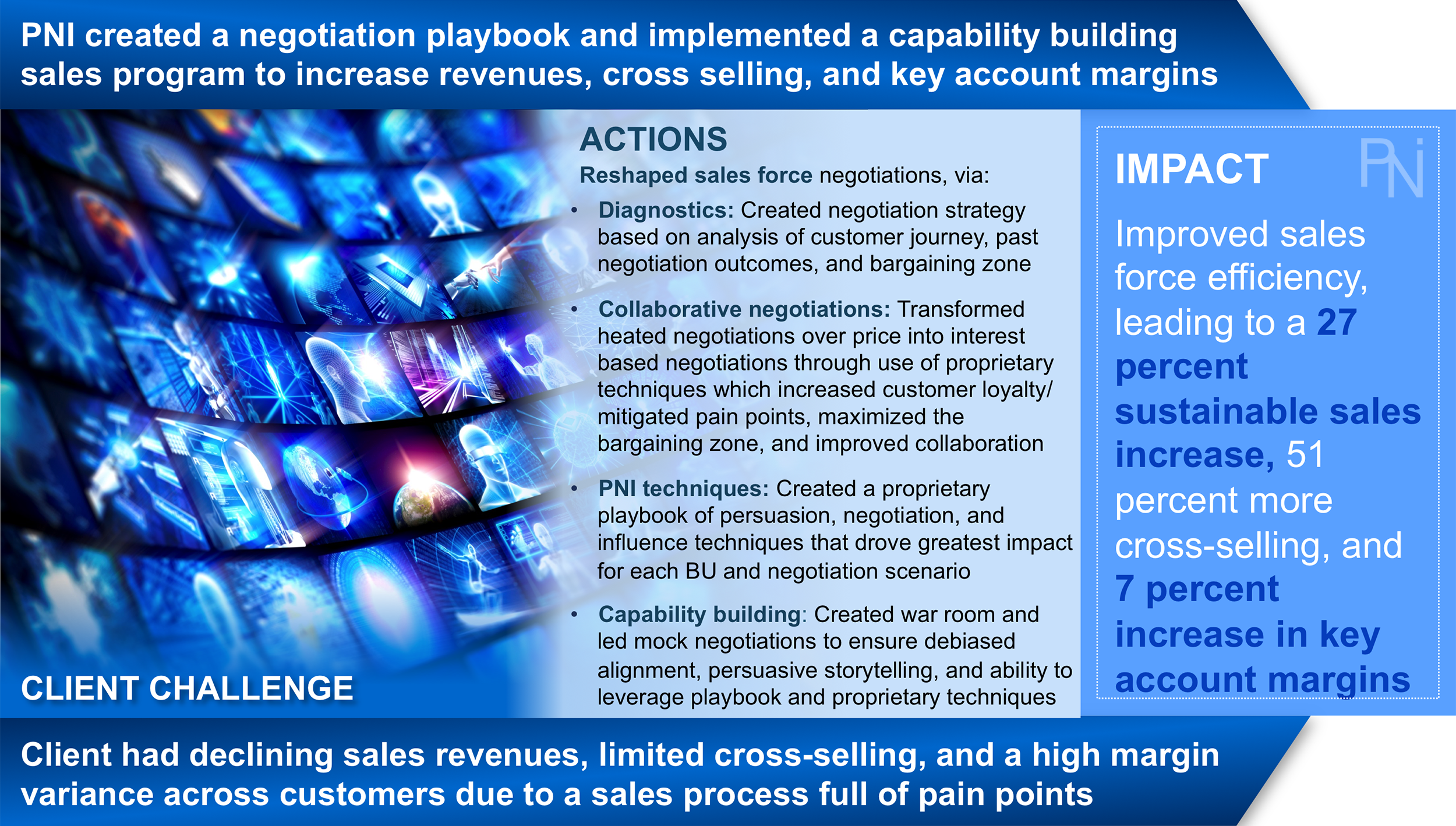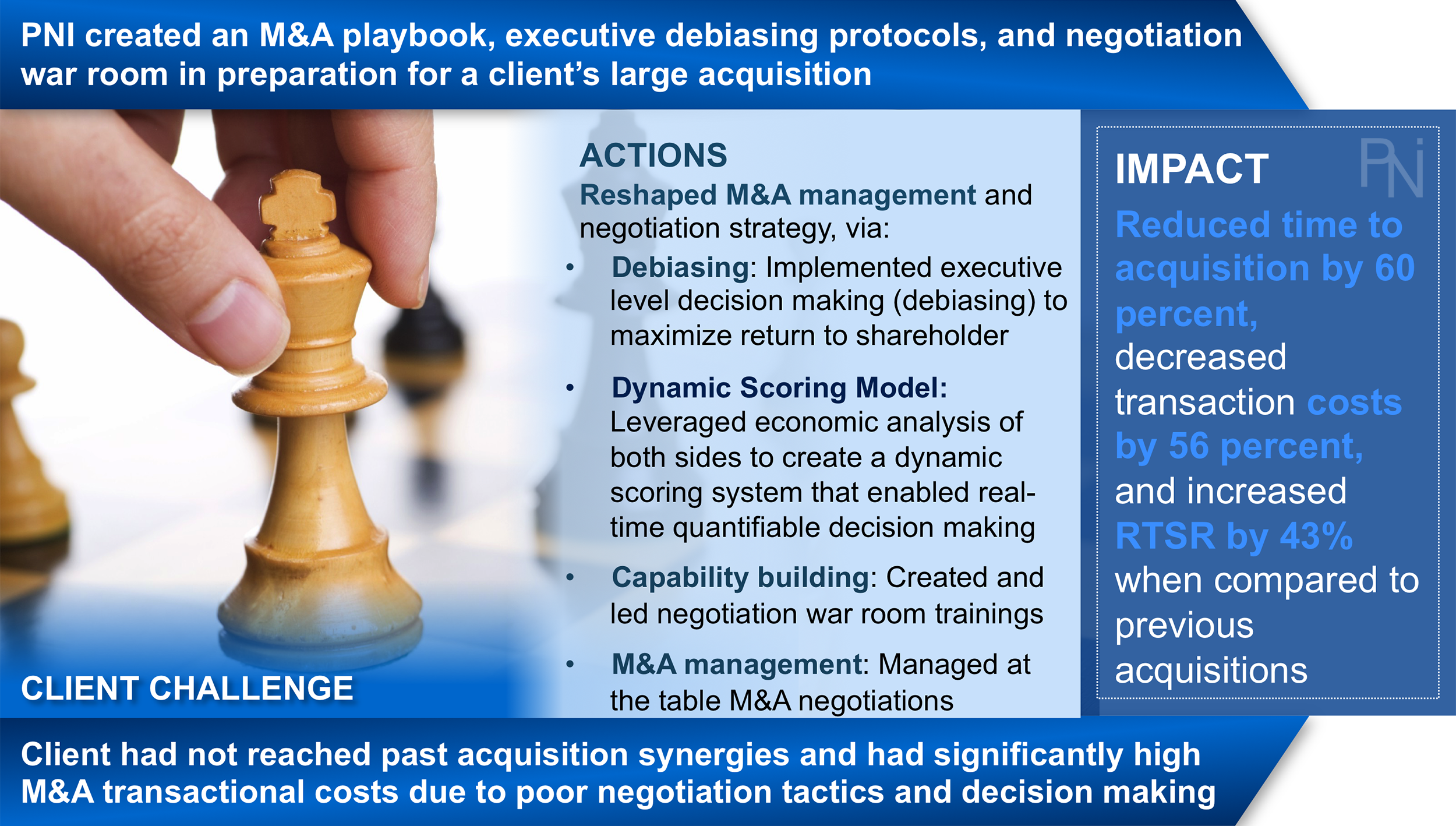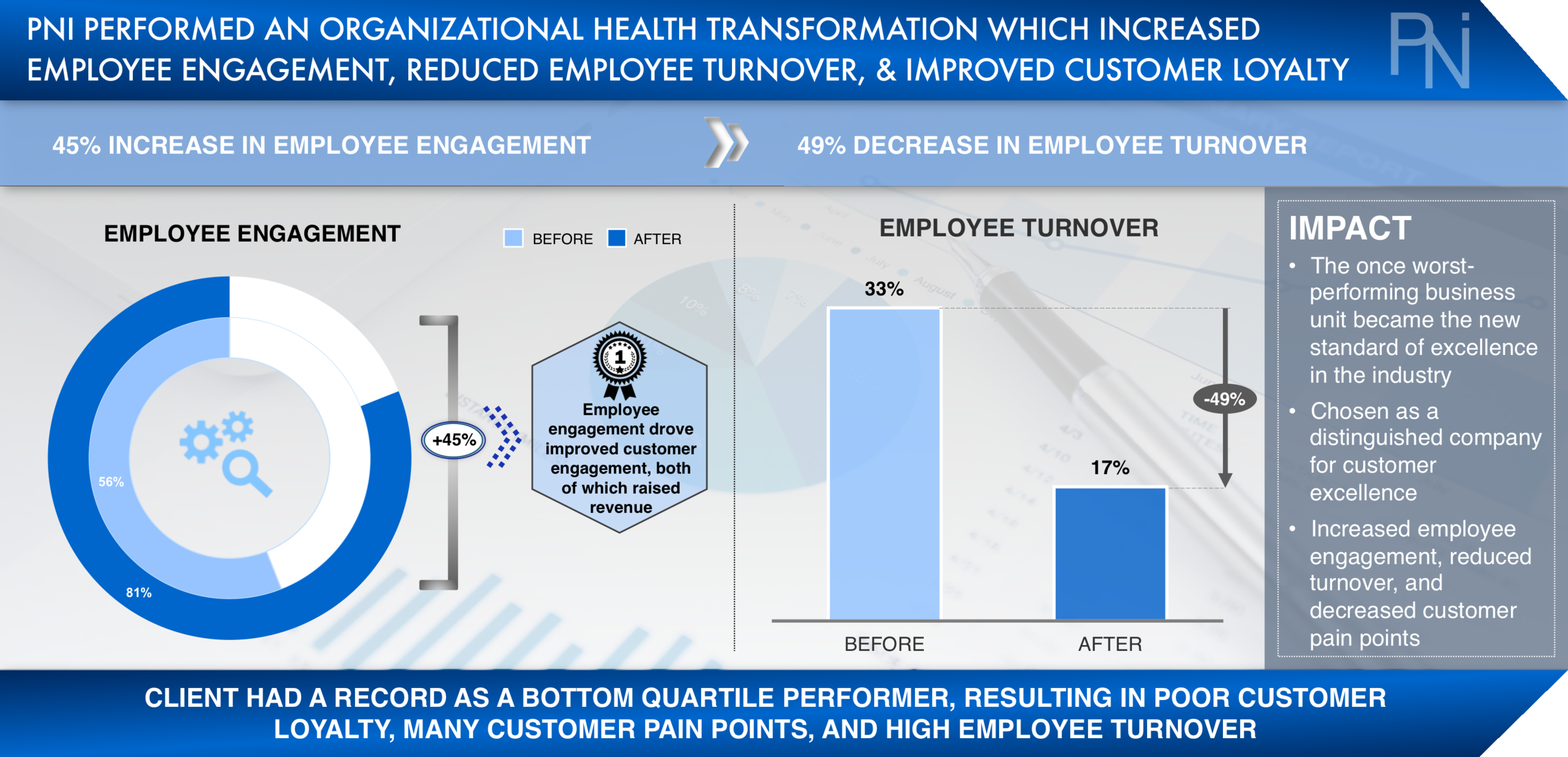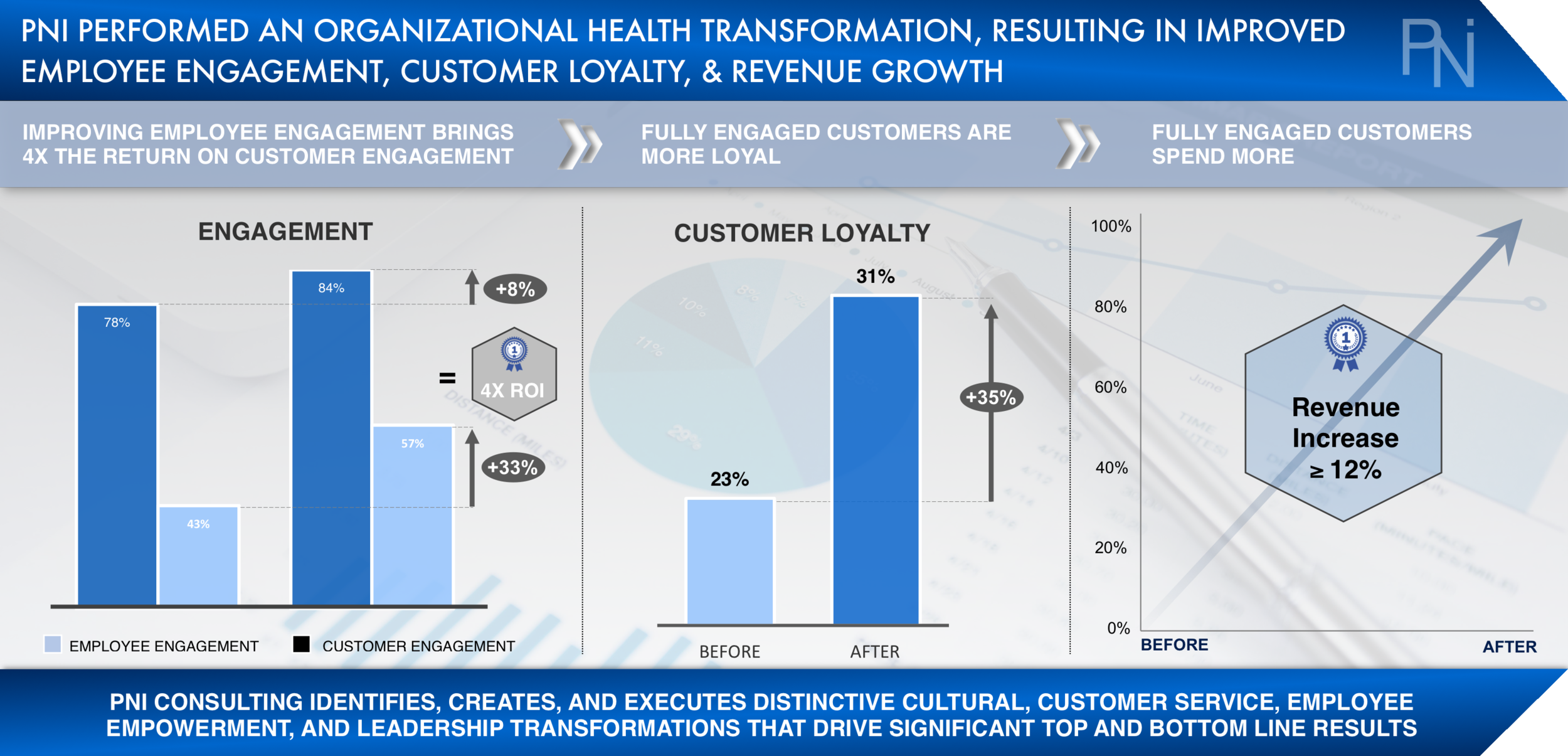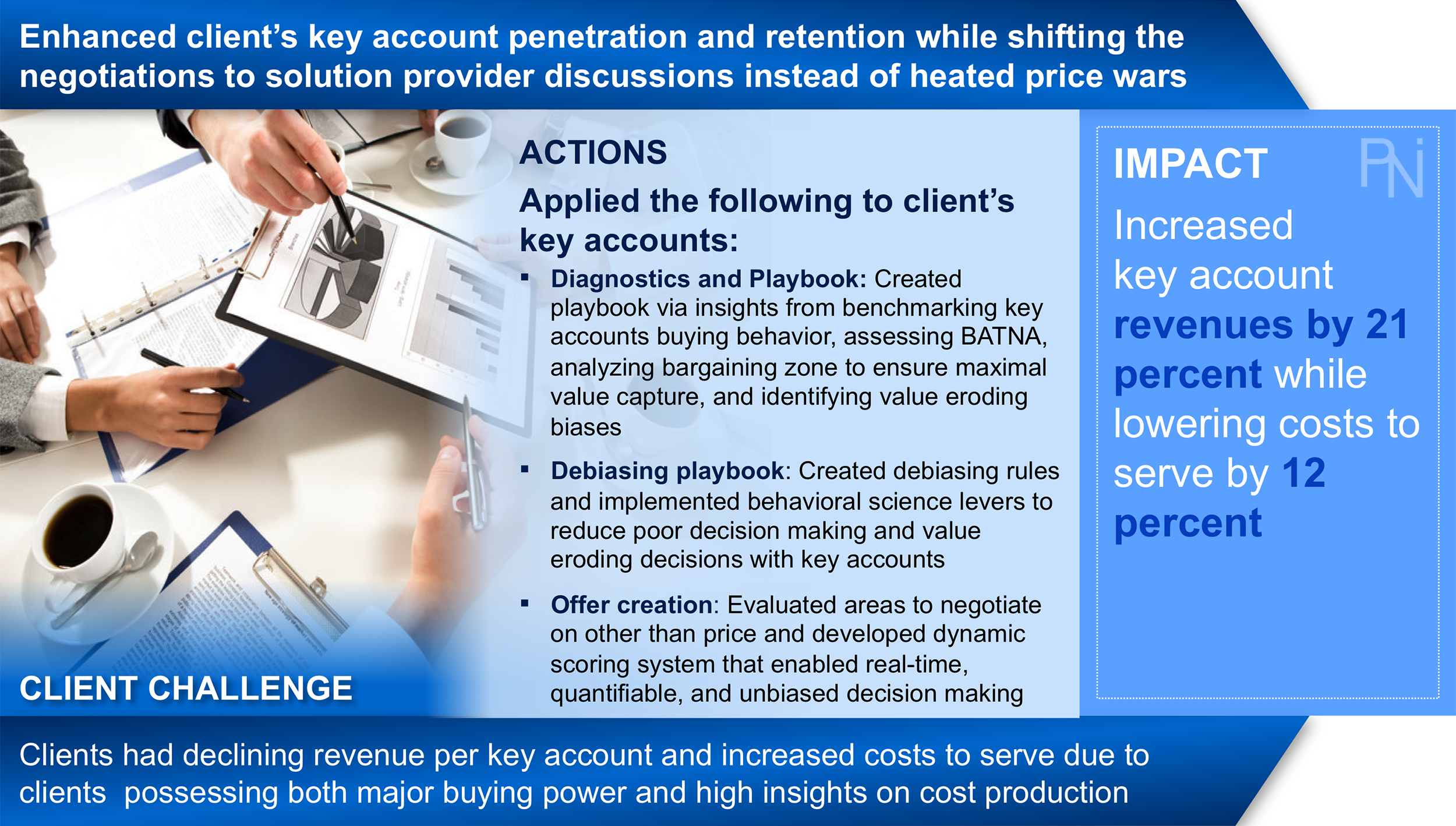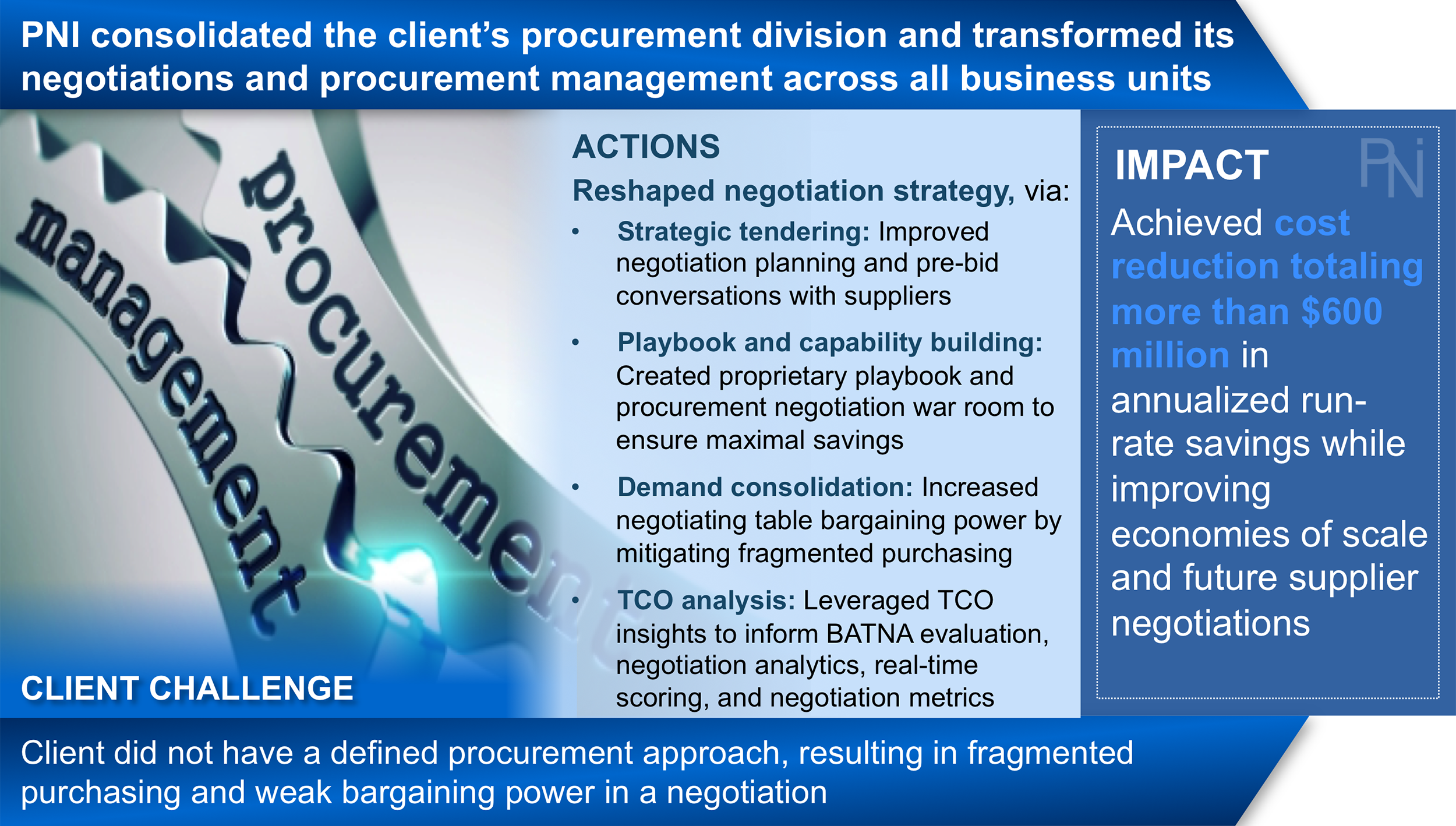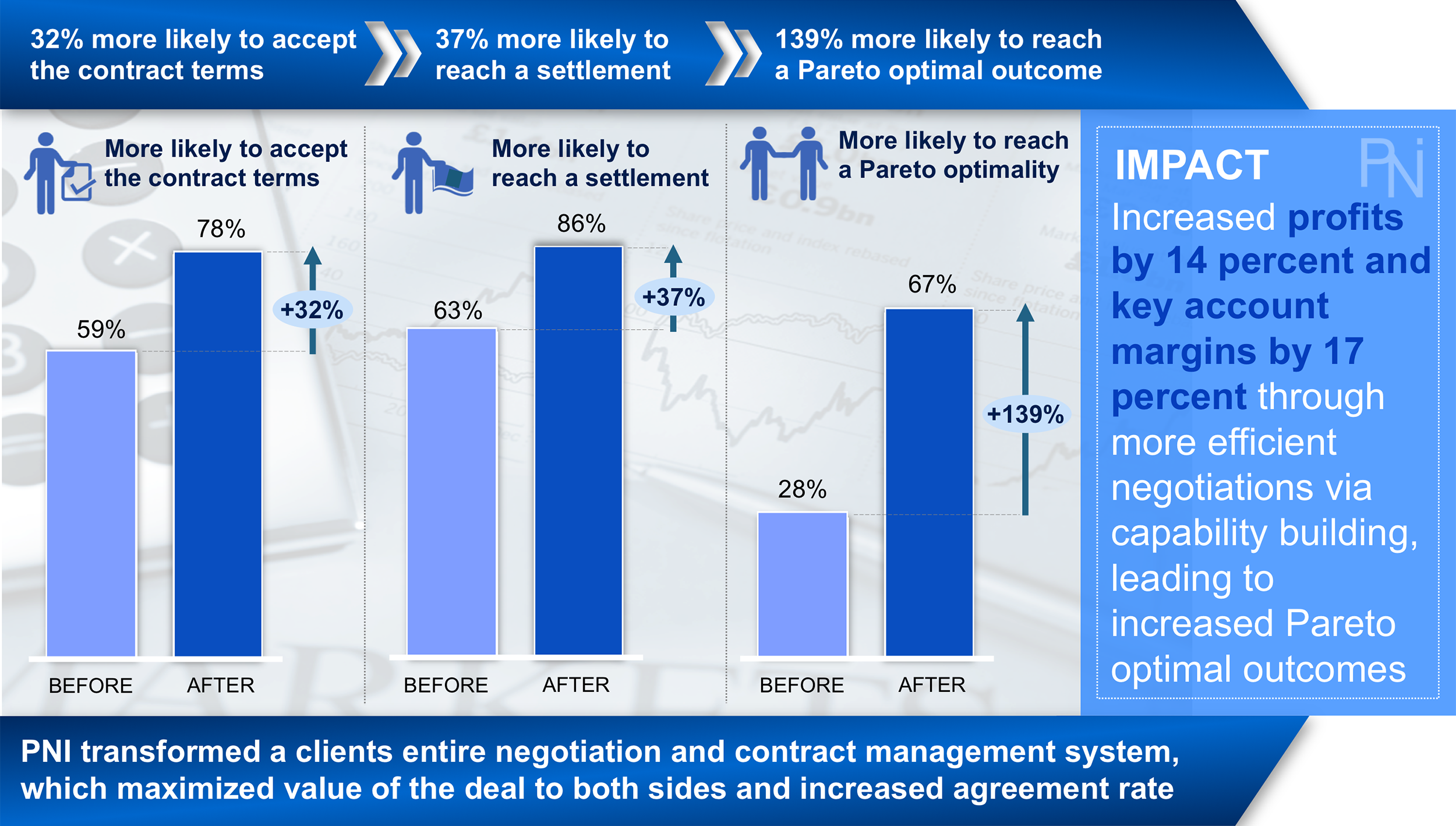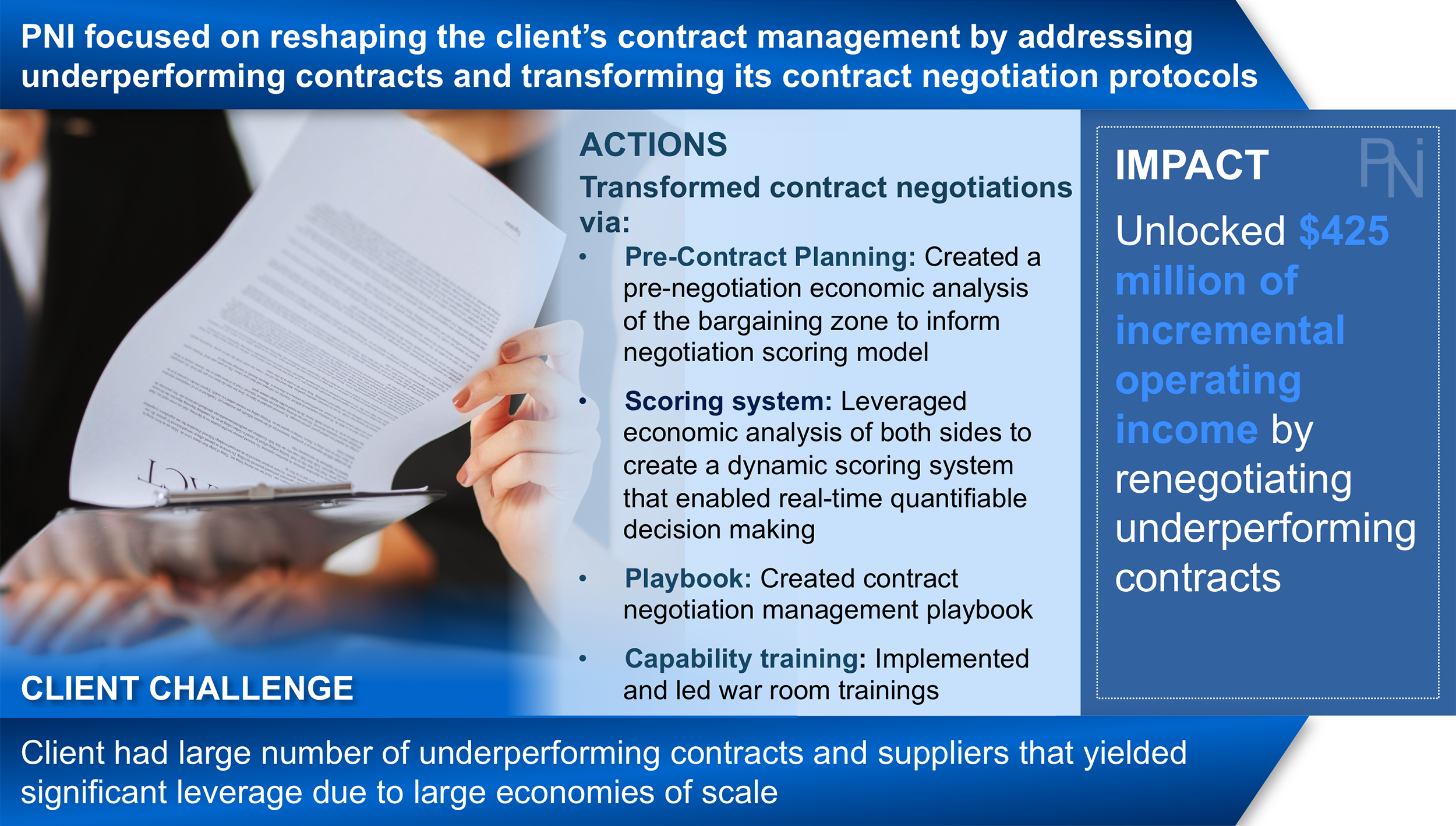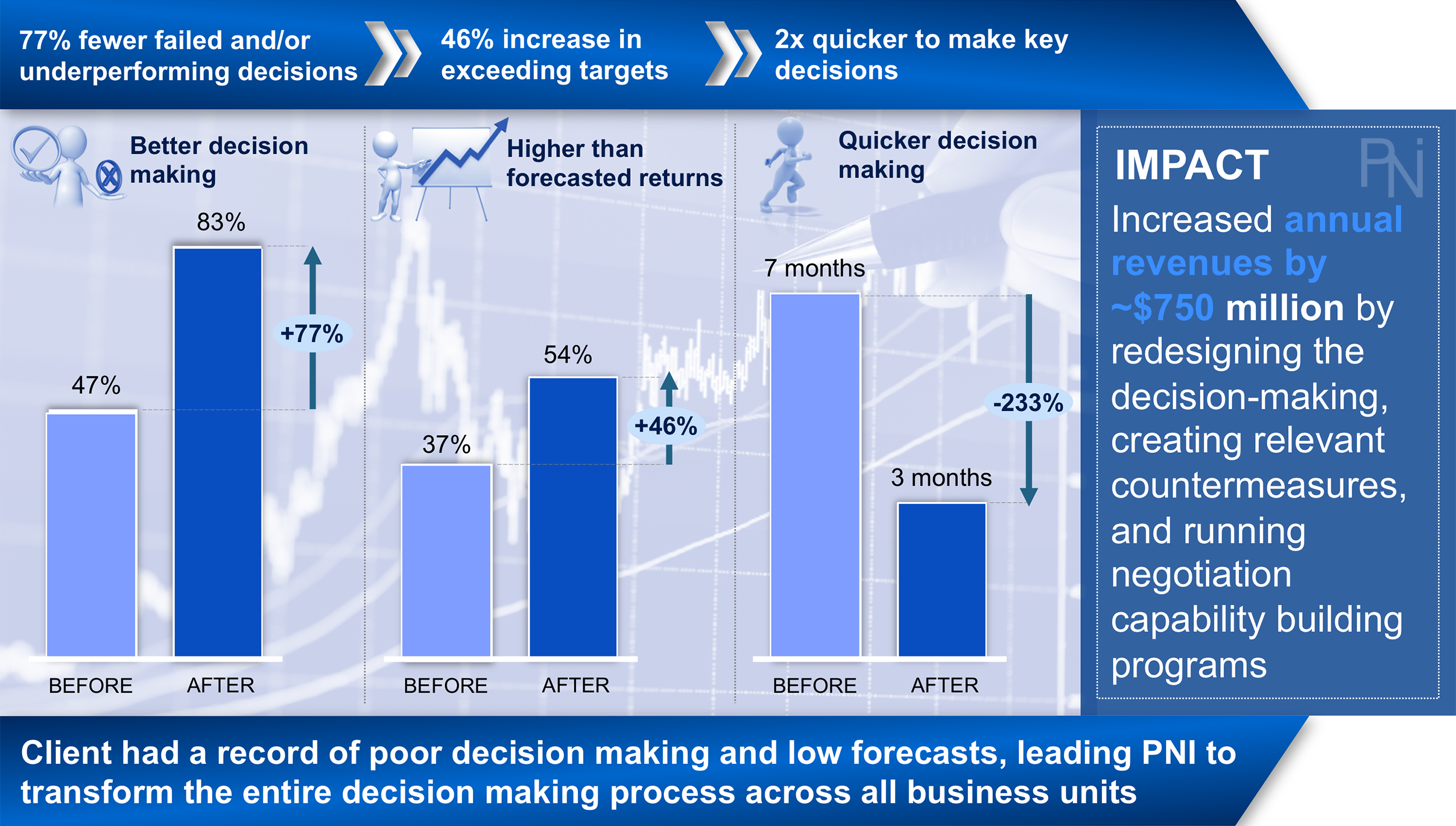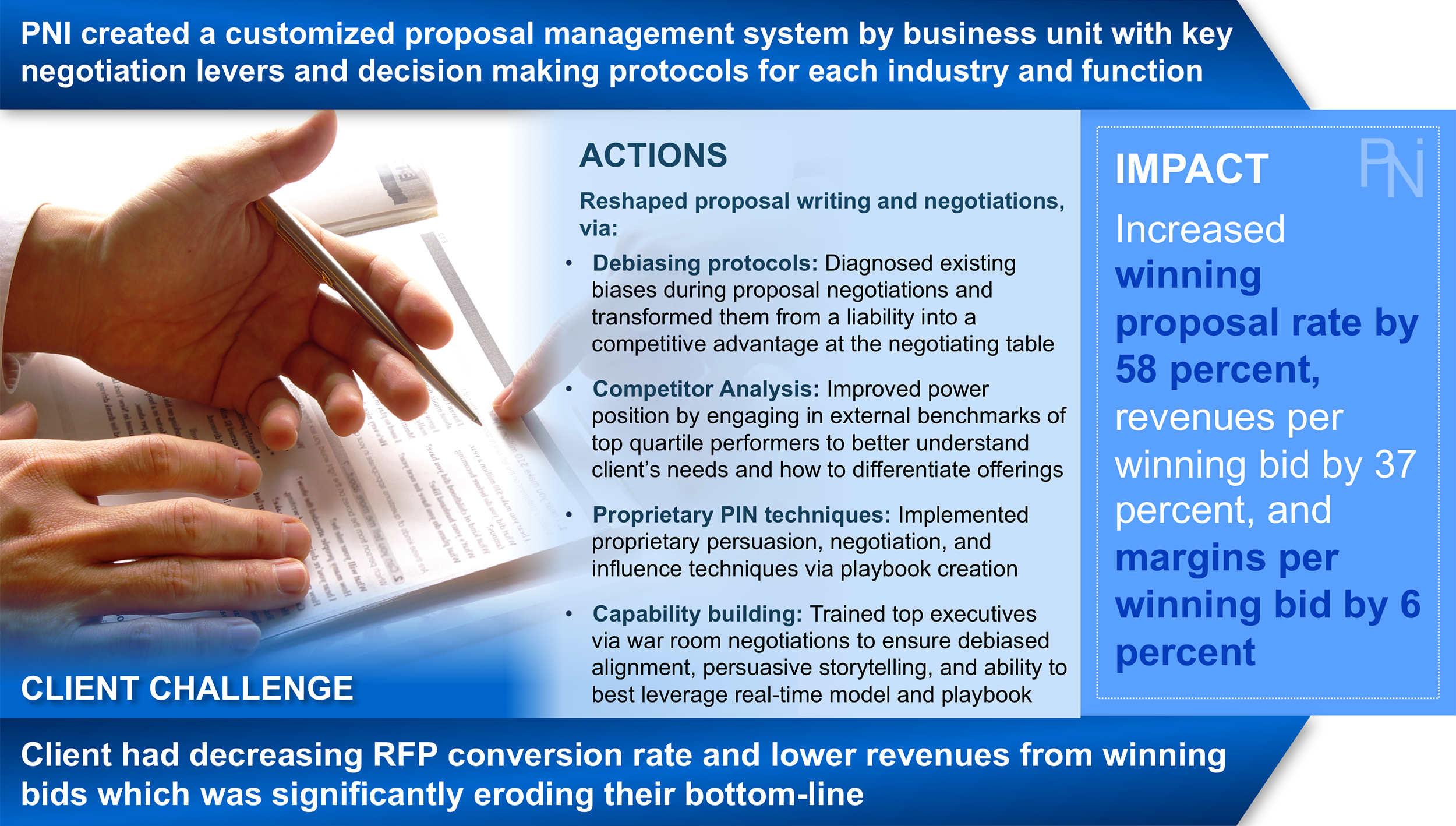Author: Joshua Seedman
Table of Contents
Executive Summary
Exhibit 1 (Click to Enlarge)
Part I of this series introduced the “inside-out | bottoms-up™” model that advocates internal transformation as the gateway to profitable growth. As noted, most of the areas holding back growth do not stem from external market or competitive forces but rather from internal and organizational health gaps. Indeed, according to a McKinsey & Company survey of over 2,000 respondents, internal issues were rated the number one most significant barrier to effectiveness (See Exhibit 1). In addition, a recent study by Bain & Company found that 85% of the root causes for failure to maintain profitable growth are now internal to a company.
Thus, the proposed “inside-out | bottoms-up” model illustrated that an internal focus coupled with an employee first mindset serves as a gateway to product innovation, service excellence, and ultimately sustainable growth (See Exhibits 2 and 3). Part II of this series now focuses on the “how” of creating employee engagement within this “inside-out | bottoms-up” model. Specifically, this article will advocate a three-step journey to creating high employee engagement, including the “how” of: (1) improving employee engagement from the bottoms-up, (2) improving cross-collaboration as a gateway to breaking down silos and ensuring an enterprise customer centric mindset, and (3) investing in engaging capability building that drives short and long-term benefit.
Exhibit 2 (Click to Enlarge)
Exhibit 3 (Click to Enlarge)
Three-Step Process to Employee Engagement Overview
- Be the Best of a High Growth Startup & F100 -
A great aspirational goal in any organizational health transformation is to determine how one can have the passion, innovation, agility, frontline obsession, and employee engagement of a startup combined with the scale, muscle, and processes of a F100 company. To accomplish this lofty undertaking leaders must first take an “inside-out | bottoms-up” approach to transforming its employee health and engagement via:
- Ensuring frontline obsession, engagement and empowerment coupled with the "right" processes
- Driving cross-collaboration and breaking down silos as a gateway for enterprise alignment and a customer centric mindset
- Investing in engaging capability building that delivers an up to 4X ROI
Phase #1
- Frontline obsession & Empowerment -
Leadership must celebrate frontline employees as the heroes of the business because they are the ones who have the best pulse of the customer. After all, frontline employees interact with customers on a daily basis. Thus, the mission should be to transition employees from an “employee” mindset, to a “partner” mindset, and ultimately to an “ownership” mindset. Startups are an excellent example of this mentality. Simply, there is significant frontline obsession where employees have a bias for action, autonomy, respect for each dollar as if it were their own, and decision-making power that ensures real-time value unlocking decisions across the customer experience spectrum. While excessive rules may work for compliance, choice is a far better option for bringing the best out of one's company and employees. Simply, choice is the fuel for an ownership mindset/engaged employee, engagement is the fuel for learning, learning is the fuel for innovation, innovation is the fuel for both distinctive products and world-class customer experience, and distinctive products and customer experience is the fuel for profitable growth.
Exhibit 4 (Click to Enlarge)
As discussed in Part I, leaders of any organization have three obligations, specifically (1) engage its employees by creating an empowered, focused, and inspired work environment, (2) delight customers with world-class service excellence, and (3) deliver strong financial results. If the first two take place financial results will take care of itself. To accomplish this goal, Phase I advocates the EPC (employee, product, customer) framework (See Exhibit 4). This simple framework ensures that any transformation begins internally with one's employees because high employee engagement is the fuel behind product innovation and customer service excellence, not the other way around. With the EPC framework in mind, the first execution step in the "how" of driving employee engagement and frontline obsession is accomplished by performing the following three steps:
- Ensure Focus, Simplicity, and Alignment
- Empower by Tracking Outcomes and Not Activities (i.e., Bring Back Choice and Autonomy)
- Create and Implement the "Right" Processes
- Phase 1 | Step 1 -
Ensure Simplicity, Focus, & Alignment
“The “focus” litmus test is whether one can wake up any employee in the middle of the night and when they’re half asleep, have them explain the company’s mission, purpose, and aspirational goal.”
Employees can’t help a company reach its aspirational goal if they don't know where the company is headed. Ultimately, the "focus" litmus test is whether one can ask any employee (from the bottom-up) to clearly explain the company’s mission, purpose, and aspirational goal. If a company thinks it will get an array of answers or vague replies it can be certain there is a lack of focus and alignment which will lead to energy and financial leakage. Thus, leadership must ensure enterprise wide focus and alignment via the following.
- Drive clear, transparent communication to the entire enterprise (from the front-line on up), ensuring the "focus" litmus test can be answered by any employee within the company.
- Create laser like focus and prioritization on the core enterprise initiatives. Simply, leaders must ensure that all the business units are truly collaborating together to advance the enterprise goals instead of working in silos to advance individual business unit goals.
- Implement an enterprise score card (i.e., company wide KPI's) that drives sustainable, cross-functional focus and incentivization on both short-term and long-term goals.
- Phase 1 | Step 2 -
Empower by Tracking Outcomes - Not Activities
“Track outcomes not activities as this is a key driver to creating an empowered, ownership driven culture.”
Once focus and alignment are in place, employees should not be micromanaged. Rather, managers should track outcomes, not activities by giving trust before expecting to receive it back. This notion is founded on the simple grounds that (1) choice is the fuel for an ownership mindset and engaged employee, (2) ownership and engagement is the fuel for learning, (3) learning is the fuel for innovation, (4) innovation is the fuel for both distinctive products and world-class customer experience, and (5) distinctive products and customer experience is the fuel for profitable growth.
Exhibit 5 (Click to Enlarge)
Simply, after ensuring everyone is focused and heading towards the same goal, give employees the trust to best leverage their own strengths, charting the course (i.e., activities) that allows them to best arrive at the set outcome. Companies must mitigate a culture of micromanagement as this only creates complexity, poor morale, stifled innovation, and poor employee engagement. Instead, ensure ownership and choice is brought back to those with the greatest interaction with your customers, the frontline (See Exhibit 5). For example, Google allows its engineers to spend 20% of their time working on anything they like. Google understands the power of employee autonomy, empowerment, and choice. Consequently, in a given year, typically 50% of Google’s new products are created from this 20%, including Gmail, Orkut, and Google News.
“Try giving employees $500 to $10,000 to spend on any customer without having to seek management approval and watch both employee engagement and customer loyalty rapidly grow.”
I often have my clients run a transformation experiment in which they give their employees the authority to spend anywhere from $500 to $10,000 (depending on the business product/offering) on any customer without having to seek management approval. The benefits of this are twofold. Firstly, the employees feel like an owner instead of an employee, which drives inspiration and predictive service excellence. Secondly, the customers have on the spot, personalized experiences because the employee can predict and/or fix a problem in real time. Simply, there is no waiting for management escalation. Thus, employees not only have the resources and empowerment to meet but to also exceed a customers expectations.
- Phase 1 | Step 3 -
Create & Implement the "Right" Processes
“It only takes a few “right” rules to bring structure to autonomy. Remember, there are only 12 notes in the musical scale, yet all the greatest music in the world from a Beethoven symphony to a classic Beatles ballad have come from those same 12 notes. ”
While this article advocates for autonomy it by no means advocates for an enterprise free-for-all. Thus, with any empowerment there should be several key processes that define the parameters for every employee. Simply, it only takes a few "right" rules to bring structure to autonomy. However, too often, managers have no direct connection to what's happening on the front line with all of their time spent on processes rather than on customers. The result is micromanagement and processes that create little benefit to the customer and frustration to the employee. Companies must remember that it only takes several appropriate rules to ensure focused, value unlocking autonomy. Otherwise organizations runs the risk of crossing the micromanaging line where choice diminishes. After all, there are only 12 notes in the musical scale, yet all the greatest music in the world from a Beethoven symphony to a classic Beatles ballad have all come from those same 12 notes. Simply, the right set of rules coupled with autonomy provides the structure, creativity, ownership, and inspiration to create masterpieces. This notion holds as much validity to the corporate world as it does to the music world. Thus, every leadership team must spend significant time problem-solving for the select few, right processes to best emanate the parameters of the musical world's 12 notes. Ultimately, the aspirational goal should be to create rules that provide clear boundaries and process with the autonomy that can spur unlimited creativity and innovation.
Phase 1 Conclusion
This first step in the "how" of driving employee engagement and frontline obsession is a vital one. Indeed, companies can unlock significant and sustainable value by (1) ensuring enterprise focus and alignment, (2) tracking outcomes instead of activities, and (3) creating the right processes that bring structure to autonomy. The results from implementing the aforementioned three employee engagement techniques are impressive. Consistently, client customer service ratings and NPS scores jump from the bottom quartile to the top quartile. In addition, employee engagement grows substantially leading to significantly lower turnover, higher productivity, and top employee advocacy as measured by Employee Net Promoter Scores (eNPS). All of these improved metrics ultimately drives significant top and bottom line improvements.
PHASE #2
- Cross-functional collaboration -
Many business units act as entities unto themselves. This in turn produces value erosive silos, hoarding, ulterior motives, misaligned incentives, and customer pain points. As long as each business unit is an island unto itself there will be significant energy and financial leakage. For example, the animosity and internal competition amongst a company’s business units are often fiercer and more value destructive than what it faces with its own competitors. Simply, business units often act as if they were part of an unhappy arranged marriage. This often means a company's own worst enemy is itself. Silos can be broken and cross-functional collaboration can be promoted by leveraging the following three steps:
- Implementing a unified data framework
- Producing a firm-wide smart view
- Creating an enterprise score card
- Phase 2 | Step 1 -
Implement a Unified Data Framework
Exhibit 6 (Click to Enlarge)
While many leaders claim data is the new oil the reality is that everyone has a vast reservoir of data. The real oil is the talent and ability to drive the appropriate insights from that data. This is especially true in today's market where ~80% of data is unstructured. By nature of this reservoir of unstructured data, companies experience decision-making paralysis because they don’t know how or where to begin in unlocking real data insights. In its simplest form, data winners are those that concurrently draw insights from (1) declared, (2) observed, and (3) inferred customer preferences. This is referred to as our DOI Data Framework where DOI is an acronym for declared, observed, and inferred customer preferences (See Exhibit 6).
“Data is not the new oil because everyone has a vast reservoir of data. The real oil is the ability to drive the appropriate insights out of that data. ”
DOI Framework Overview
- Declared Data: According to market research, consumers are willing to spend up to 30 minutes (over time) with a given brand to declare their shopping preferences.
- Observed Data: Consumers leave a long trail of bread crumbs that can help inform preferences includes spending habits, conversations with employees, and online behavior (e.g., social media handle).
- Inferred Data: By leveraging declared and observed preferences, artificial intelligence and its cognitive capabilities can predict customer’s preferences.
This simple framework ensures companies no longer fall prey to decision-making paralysis but instead becomes a data winner by concurrently drawing data insights from these three core areas. To accomplish this undertaking, organizations must leverage (1) traditional data tools and algorithms (2) employees across both traditional brick and mortar stores and digital channels (e.g., call centers), and (3) customer forms across platforms such as eCommerce, mCommerce, apps, and social media to acquire "declared" customer preferences. Ultimately, organizations must ensure they're properly tapping into customers' willingness to declare their preferences, ensuring the customer understands that this material is being leveraged to create a more personalized, "wow" experience for them and them only. This must be done with discretion and over time in order to avoid customer alienation. As previously noted, and according to industry data, customers are willing to devote up to 30 minutes (over time) sharing preferences with companies. Thus, companies must ensure they're capitalizing on customers' willingness to share these key preferences.
In addition, firms must heavily leverage artificial intelligence to best draw out "observed" and "inferred" customer insights. Without AI's cognitive platform, drawing appropriate preferences from observed and especially inferred data will be infeasible. From platforms such as social media handles, customer spending habits, and accompanying website browsing history, customer breadcrumbs are in abundance. However, most firms squander these value unlocking data points because they lack AI's capabilities and fall into decision-making paralysis.
When used concurrently, insights from declared, observed, and inferred data will drive insightful and predictive customer personalization. Simply, no two customer experiences will be the same. Instead, a company will be equipped to offer a highly personalized experience that's completely unique to that customer and that customer only. Thus, the aspirational goal with this data framework is segmentation at a level of 1:1. Ultimately, it's no longer enough to meet customer expectations. To be a winner, companies must exceed customer expectations and this data framework will help in this journey.
- Phase 2 | Step 2 -
Produce a Firm-Wide Smart View
Exhibit 7 (Click to Enlarge)
The complexity of the corporate landscape is ever increasing, which is driving an increasing number of internal silos that contributes to what this articles calls customer amnesia (See Exhibit 7). Concurrently, customers are more sophisticated than ever, expecting a streamlined, “wow” experience at every touchpoint in the purchasing lifecycle. Such a mindset is industry and channel agnostic. However, each business unit typically has a different view of the customer because they are hoarding customer data and insights. This poor cross-collaboration not only stifles internal culture and innovation but also erodes the customer experience. Simply, the company has “customer amnesia” because each time a customer interacts with a different business unit or channel the last interaction is unknown or forgotten (See Exhibit 7).
Exhibit 8 (Click to Enlarge)
Customers won’t tolerate such behavior because B2C retail and the likes of Amazon have forever shifted consumer expectations. Simply, customers now make no differentiation between buying. To the customer, shopping is shopping – plain and simple. This has left a large gap across industries between what customers expect and what they actually receive, equating to a poor customer experience and significant value erosion (See Exhibit 8). Simply, there is a what this articles terms a large “customer experience gap” in which this "customer amnesia" is part of the root problem. A byproduct of this customer experience gap is declining customer loyalty, lifetime value, and advocacy, all of which profoundly impacts the bottom line.
“Without a company wide smart view, an organization experiences “customer amnesia” because each time a customer interacts with a different business unit or channel the last interaction is unknown or forgotten.”
Instead, organizations must improve both employee engagement and cross-functional collaboration in an effort to create a truly “omnichannel” approach, even if not in the retail industry. Thanks to digital, omnichannel is now industry agnostic and is applicable even to the B2B space where over 50% of buyers are millennials who have come to expect a certain type of shopping experience. Thus, the aspirational goal is to create a seamless experience for the customer, ensuring that cognitive, omnichannel experiences replace customer amnesia. To create such a streamline experience, companies must break down siloed walls via leveraging a smart view model which brings together a single view of three key areas, specifically a (1) single view of the customer, (2) single view of the inventory, and (3) single view of the order history (See Exhibit 7). Such a model would be centralized, available to every business unit in the organization and updated in real time, allowing for real time interactions with customers no matter where they are in the purchasing lifecycle. Without this simple enterprise smart view, the customer journey quickly erodes because of enterprise silos which drive customer amnesia, untapped data insights, and an ever widening customer experience gap. This smart view of the customer will drive cross-functional collaboration, allowing companies to leave behind this amnesia by (1) closing the innovation gap between itself and the B2C retail space, (2) providing full enterprise, real-time transparency into a customer’s interactions, and (3) creating a platform full of key data insights that will allow the enterprise to drive predictive, personalized customer interactions.
- Phase 2 | Step 3 -
Create an Enterprise Scorecard
“Without an enterprise scorecard where every employee is aligned with the same KPI’s, each business unit will be incentivized differently, making it easy to lose focus on the real goal. This leaves significant room for silos to form along with slow, complacent decision-making.”
Finally, cross-functional collaboration hinges on having an enterprise scorecard whereby all the business units and employees within a company have the same KPI’s. This ensures a true team effort versus silo hoarding and misaligned incentives. Such s premise stems from that fact that leadership will not get the company where it needs to go unless it brings laser-like focus. Along with that focus, everyone must be incentivized to get to the company’s aspirational goals in an expedient fashion because today’s winners are not those with size but rather those with speed. However, if each business unit is incentivized differently it becomes easy to lose focus on the real enterprise goal, leaving significant room for silos to form along with slow, complacent decision-making and many customer pain points.
“Winners are not those with size but rather those with speed. ”
A simple rule of thumb is that a company won’t get what it doesn't incentivize. Combined with tracking for outcomes instead of activities this enterprise scorecard will drive (1) significant team ownership, (2) quality team decision-making, and (3) cross-functional synergies, allowing the entire organization to reach its aspirational goal in the most expedient fashion.
Step #3
- Enterprise Capability Building -
“For every $1 invested in employee training an up to $4 ROI can be seen with customers. With only 30% of employees engaged in their work the investment decision is simple. ”
More often than not, companies spend far too little in employee training and capability building. And, even when they do invest, training engagement is low which drives a poor ROI. In a nutshell, not all capability building investments are created equal. To create firm-wide employee engagement companies first need capability building that is also engaging. According to our client engagements and research, every $1 invested in improving employee engagement can drive up to $4 ROI. In addition, and according to both Gallup and Qualtrics, only 30% of employees are engaged in their work. Thus, with a potential 4X ROI the investment decision is quite simple. For example, Walmart in 2014 noticed that only 16% of its stores were meeting their customer service goals. Since opening 200 employee training facilities in 2015 the number of stores hitting their goals rebounded to 75%.
“Not all capability building investments are created equal. The number one, and often overlooked, training goal should be engagement. Simply, to create employee engagement you first need engaging capability building. Thus, traditional corporate classroom training is one of the least effective techniques because it lacks that engagement.
”
While the training ROI potential is significant, oftentimes when companies finally decide to invest in capability building they do it incorrectly. According to our research, the traditional method of corporate classroom training is one of the least effective techniques to building capabilities. Simply, companies often spend an enormous sum on providing the same training to its entire organization. However, this is (1) not engaging, (2) not tailored, and (3) not experiential. For example, organizations often provide the entire enterprise with the same e-learning training. Unfortunately, most of the employees put the training on one monitor and work on unrelated material on another monitor. This leads to zero improvement across employee engagement, customer loyalty, and innovation. Instead, this cookie cutter approach leads to an even more uninspired work force, diluted productivity, and a significant investment loss. Instead, companies should implement experiential capability building that allows customizable frameworks that appeal to the needs and learning styles of different employees and business units. For example, war room and train-the-trainer initiatives are an excellent choice because it provides a level of customization and experiential training that is far more engaging than e-learning. This is simply one example of many that if done properly, can create an organizational talent, training, and engagement engine.
A company's employees are its greatest asset so naturally it should invest in them. However, and as noted, not all capability investments are created equal. Thus, the number one capability building goal should be engagement, which is the key to reaching an up to 4x ROI. Consequently, such a distinctive capability building engine will give the enterprise a human capital competitive advantage with high barriers to entry. In turn, this will produce a far more capable workforce that will not only be more skilled but also more inspired to create "wow" customer experiences.
Bringing It All Together
- Tracking Progress -
“Keep a constant pulse on employee advocacy via Employee Net Promoter Scores (eNPS) because employee engagement levels can predict whether customers become detractors or advocates. ”
Finally, after implementing the above three areas (i.e., empowerment transformation, cross-functional collaboration, and capability building investment), a company must track in real time how these initiatives are moving the needle. This can be accomplished via constant employee and customer surveys such as eNPS and NPS (Employee/Net Promoter Scores). Simply, a firm must keep a constant pulse on both its employees and customers because there is a strong correlation between employee and customer advocacy. Consequently, employee engagement can predict whether customers become detractors or advocates.
For example, regarding employees, every week a company could run a one to three question survey asking employees on a scale of 1-10, “How likely is it that you would recommend this company as a place to work to a colleague, friend, or family member?" A company could also break this down by business unit. For example, within a sales division, a firm could ask, “How likely is it that you would recommend this sales division as a place to work to a colleague, friend, or family member?" Finally, any company can measure an employee’s advocacy for its product or service by asking, “How likely would you be to recommend this company’s products or services to a friend or colleague?" Any of these three questions will give companies a solid benchmark for tracking the improvement of an inside-out, bottoms-up transformation by letting it keep a constant pulse on employee advocacy and engagement. A similar format can be used with each customer interaction allowing for dynamic, real-time input on customer advocacy and the impact of any employee engagement transformation.
“Constant tracking of customers and employees ensures pulse keeping on two of the most highly correlated data points for service excellence and revenue growth.”
While critics of NPS and eNPS note it's lack of holistic detail, the key is that it provides nearly real-time feedback, driving essentially 80% of the value of more lengthy customer and employee surveys but in a fraction of the time. Remember, winners in today's ever-quickening innovation cycles are not those with size but rather those with speed. This is true in both drawing out real-time insights as well as quickly acting on those insights. Ultimately, constant tracking of customers and employees ensures pulse keeping on two of the most highly correlated data points for service excellence and revenue growth. Such an approach, unlike an OHI which may be done annually with the aggregated results not coming in for another several months, provide real-time input for constant enterprise course correction. Simply, NPS and eNPS caters to this new speed initiative providing any customer and employee transformation with the feedback to make real-time pivots, thus ensuring such initiatives are creating advocates rather than detractors.
Conclusion
“The path to internal health and employee engagement is not for the faint of heart but nothing is as vital to a company’s success as these two foundational areas. ”
The path to internal health and employee engagement is not for the faint of heart but perhaps nothing is as vital to an organization’s success as these foundational areas. Part I of this series explored a new mindset to internal transformation called inside-out | bottoms-up™ which discusses the importance of an internal transformation as the gateway to profitable growth (Read HERE). Part II (current article), explored the “how” of implementing employee engagement, specifically via: (1) ensuring frontline obsession and company wide employee empowerment, (2) improving cross-functional collaboration as the gateway for breaking down silos, and (3) investing in capability building that drives engagement.
Ultimately, the roadmap discussed in these two articles will allow an enterprise to combine the passion, innovation, agility, frontline obsession, and employee engagement of a high growth startup with the scale, muscle, and processes of a F100 company. Indeed, prioritize an inside-out | bottoms-up approach with the aforementioned employee engagement rules and new found profitable growth will not be far behind.
***Read Part I of this series HERE, which outlines the "inside-out | bottoms-up" approach in detail.
About the Author
Joshua Seedman is the founder and chairman of PNI Consulting, a management consulting firm that specializes in global transformations. He has over 20 years of operating and general management experience with expertise in organizational transformations, customer experience, employee engagement, digital transformations, sales & marketing, operational turnarounds, culture/change management, and high-stakes negotiations. His experience includes executive roles within F500 companies, top-tier consulting leadership (McKinsey & Company), over 10 years of global P&L responsibility, and corporate lawyer (Davis Polk & Wardwell). He received his MBA from Kellogg School of Management and his J.D. (cum laude) from Northwestern University School of Law.
































